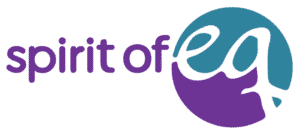Seven Decades, A Journey of Learning and Sharing
Today, I thought I would take a moment to talk about myself, a topic I don’t often delve into with much depth. As I sit here, fingers poised over the keyboard, I find myself reflecting on the reasons why people write blogs. Is it to share knowledge, to connect with others, or perhaps to leave a small mark on the world? Truthfully, I wonder if my reasons are much different from those behind the wonderfully written blogs that populate the vast expanse of the internet. So here it is, a glimpse into my journey and the motivations that drive me to write.
In my seven decades of life, I’ve learned a few things. Most of these lessons have come from the mistakes I’ve made—those missteps I vowed never to repeat, only to find myself stumbling over them once more. It’s a humbling experience, realizing that despite our best intentions, we are all fallible. Yet, it’s through these very mistakes that I’ve grown, each one a steppingstone on the path of self-discovery.
This quest for understanding led me to seek out numerous trainings, each one a beacon of hope in my search for answers. I became a spiritual director and companion, a Master Certified Coach (MCC), a Narrative Enneagram teacher, and an emotional intelligence coach with Six Seconds, among other roles. Each title represents a chapter in my journey, a testament to my insatiable curiosity and desire to understand the human experience.
At the end of the day, what truly matters to me is working with other people. But let me be clear—it’s not because I believe I have all the answers. Far from it. Rather, I hope that, for some, I can be a light that illuminates their path, even if just a little. It’s a privilege to walk alongside others as they navigate their own journeys, offering support and guidance where I can.
The purpose of this blog, then, is to explore the issues that affect our society, to write about the things that impact us as a community. My hope is to offer insights, hope, or simply information that might resonate with someone out there. In a world that often feels fragmented and disconnected, perhaps these words can serve as a small bridge, connecting us through our shared experiences and understanding.
As I reflect on my life, I am reminded of the importance of community. We are, after all, social creatures, wired for connection. It’s in our interactions with others that we find meaning and purpose. Whether it’s a conversation with a friend, a shared moment with a stranger, or the simple act of listening, these connections end up being the threads that weave the fabric of our lives.
In my work as a spiritual director and coach, I’ve had the privilege of witnessing the resilience and strength of the human spirit. I’ve seen people overcome incredible odds, find healing in the face of deep wounds, and discover joy in the most unexpected places. These experiences have taught me that, no matter how dark the night, (dark night of the soul) there is always a glimmer of hope on the horizon.
One of the most profound lessons I’ve learned is the power of vulnerability. It’s in our willingness to be open and honest, to share our struggles and fears, that we find true connection. It’s a lesson I’ve had to learn time and again, as I navigate my own vulnerabilities and insecurities. But each time I choose to be vulnerable, I am reminded of the strength that lies in authenticity.
As I write this, I am filled with gratitude for the journey that has brought me here. It’s been a winding road, full of unexpected twists and turns, but each step has been a valuable part of my story. And while I may not have all the answers, I am committed to continuing this journey of learning and growth, both for myself and for those I have the privilege of working with.
I want to thank you for taking the time to read these words. Whether you’re a fellow seeker on this journey of life, or simply someone looking for a moment of connection, I hope you’ve found something here that resonates with you. As we navigate the complexities of our world, may we continue to seek understanding, to offer kindness, and to hold onto hope. After all, it’s in these small acts that we find the true essence of what it means to be human.
And since you joined me on this reflective journey today. I wonder If these words have resonated with you, and if so, I invite you to become part of this ongoing conversation. Share your thoughts, experiences, or questions in the comments below. Let’s build a community where we can learn from each other, support one another, and shine a light on the paths we walk together. If you know someone who might find value in these reflections, please share this blog with them. Together, we can create a ripple of connection and understanding in our world. Subscribe to stay updated on future posts, www.spiritofeq.com/blog and let’s continue this journey of growth and discovery side by side.
